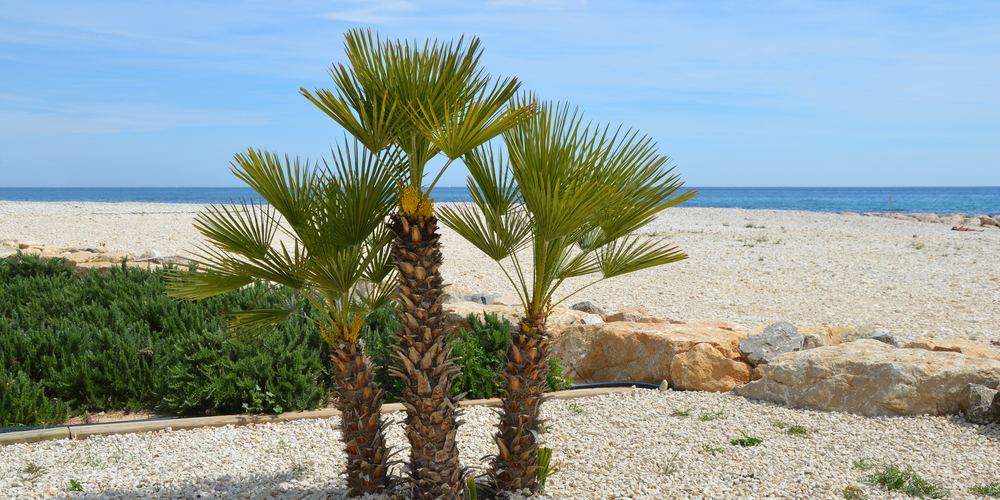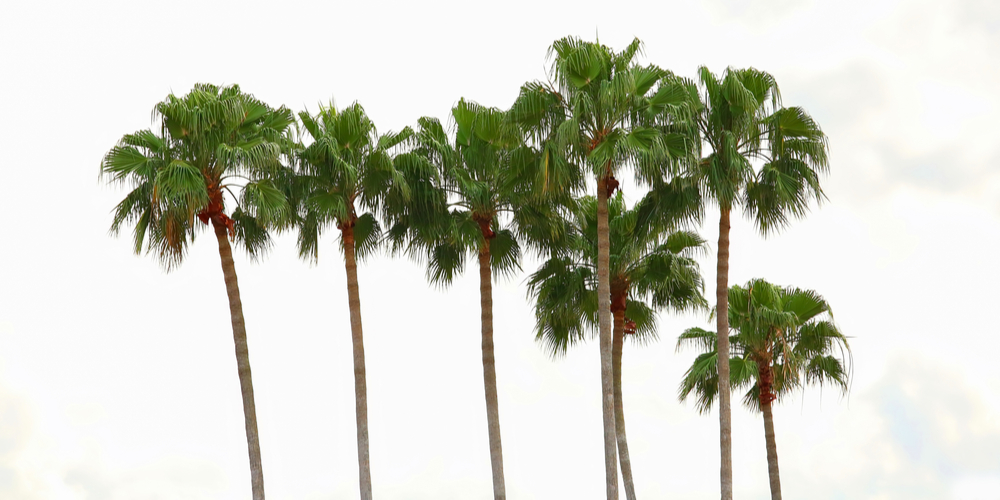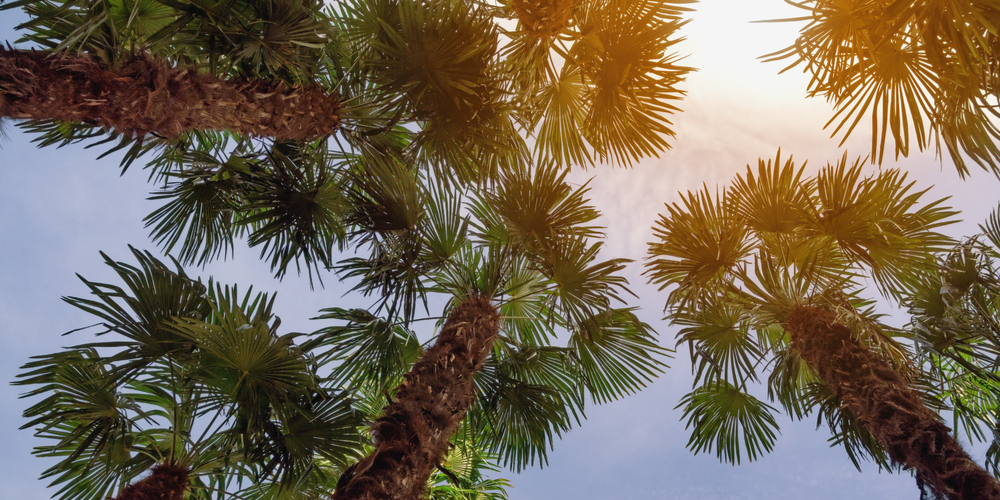Palm trees are iconic tropical forest plants that grow in many states. They come in all shapes and sizes, plus they boast a stunning diversity, despite it not being depicted in the familiar postcard images of coconut palms leaning over the white sandy beaches. Most importantly, palm trees are evolutionary, morphologically, and physiologically distinct from other trees. This leads to the popular question, are palm trees grass?
Quick Answer
Well, palm trees are exotic plants botanically classified as monocots, where the grass is a member. This class’s other well-known flowering members are orchids, lilies, corn, wheat, and rice.
Because palm trees are more genetically related to turfgrass, they are considered a type of grass. This post will cover more on palm trees, emphasizing why they are not, well, trees.
Are palm trees grass?: How are they similar to grass?
Palms trees, despite being named, well, trees, are considered a kind of grass, not a kind of tree. This sounds extraordinary, but definitely, there is a reason. So, why are palm trees considered grass? They belong to the same class as grass.
Despite the fact that grass and palm trees are in separate genetic families – grass belongs to the Poaceae family and palm trees belong to the Arecaceae family – they are both monocots.
Botanically, the defining qualities of monocots are the single cotyledon (plants whose seed contains only one leaf) and fibrous stems with no vascular cambium.
In addition, monocots have fibrous roots, the veins in their leaves are parallel, and the flower parts are in ones and threes. Surprisingly, palms share all these features with grass and other members of the monocot class.
Here is how palms are similar to grass:
Roots: Both palm trees and grass have extensive root systems that spread broadly across the shallow soil underneath.
Stems: A variety of grasses develop a solitary stem comparable to that of a palm. Although it is easy to think that palm trees have a trunk, the tall, thick structure that supports their foliage is actually a stem made of fibrous tissues.
Leaves: Palm leaves and grass have leaf veins that run parallel, starting at the base to the length of the leaf.
Flowers: Monocots usually bloom into flowers arranged in sets of ones and three. When palm trees and grass bloom, they produce flowers whose petals and stamens are ordered in sets of thee or sets divisible by three.
It is clear that palm trees have more in common with grass. This makes it safe to say that palm trees are a type of giant grass.
Why are palms designated as trees?
Despite the palm tree not being genetically similar to trees, it has the term “tree” in its name. So, why “tree”?
When discussing plants in a landscape, many palms assume rather tall heights when grown in ideal conditions. Due to their height (comparable to that of trees), they are designated as trees to distinguish them from shrubs and ground covers. Further, palms feature massive evergreen leaves and are extremely diverse, common characteristics among trees.
Notably, even with their long, thick stem, palm trees don’t synthesize wood cells and do not have rings; instead, their stems have large, tube-like cells. They do not produce any amounts of cambium, a layer of actively growing cells that make an actual wood.
Palm trees usually have fibrous, spongey, and wet stems that remain flexible and can easily bend in the wind. Even so, the stem and fibrous, shallow roots support the palm’s height and weight adequately.
Why are palm trees not trees?
When it comes to classifying plants botanically, there are many aspects to consider. Besides the obvious characteristics that place palm trees in the category of monocots, there are those that distinguish them from other trees.
While it is natural for trees to have a trunk, palms do not have a trunk despite being designated as trees. True trees produce cambium, which creates rings as the trunk grows outwards. Their root systems also differ from those of many real trees – palms have shallow, fibrous roots, whereas most trees have taproots.
Unlike ordinary trees, palm trees do not have a secondary growth period. Instead, their cells age and keep going until the individual tree dies. Palm trees usually live longer, with many species likely to outlive humans.
Another noteworthy difference is that palms are more susceptible to damage and disease than ordinary trees. When damaged, they are unable to heal on their own.
Are palm trees grass: Conclusion
Overall, it remains safe to say that palm trees are technically giant grass.
Related Article: Indoor Palm Trees


